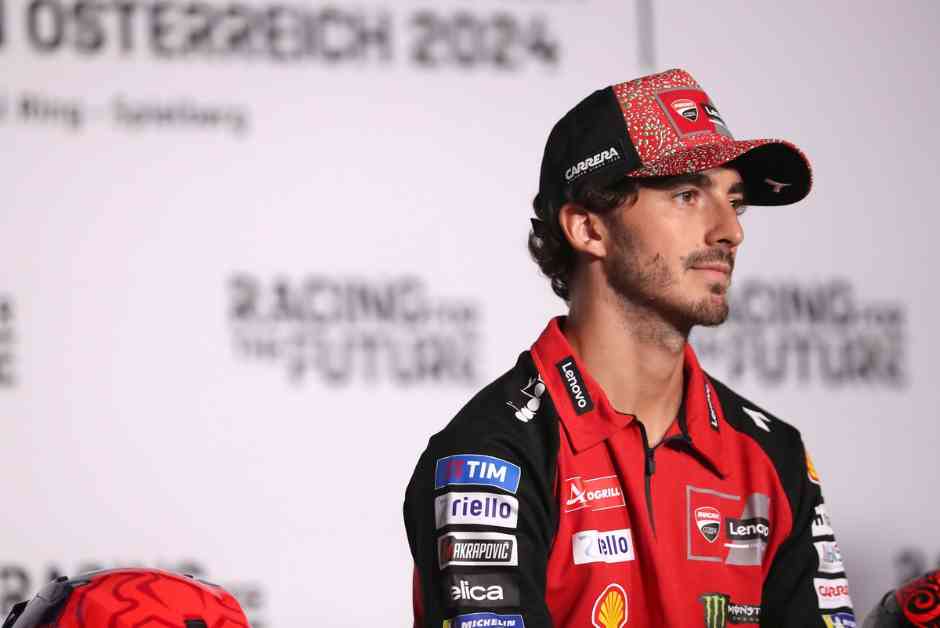Analysis of Ducati’s Dominance in MotoGP
In recent MotoGP races, riders with the latest Ducati GP24 have been dominating the podium, showcasing their superiority over their competitors with older models. The resurgence of Enea Bastianini has further reinforced Ducati’s stronghold, leaving other teams like Gresini and VR46 struggling with their GP23 bikes. This shift in performance has had a significant impact on the championship standings, with even seasoned riders like Marc Márquez facing challenges to keep up with the pace set by the GP24 riders.
Pecco Bagnaia, a key figure in Ducati’s success this season, has shed light on the differences between the GP24 and GP23 models. While the GP24 seems to have a better understanding and utilization of Michelin’s rear tire changes, Bagnaia insists that the two bikes are not as distinct as one might think. Surprisingly, the GP23 has faced a decline in competitiveness since the French Grand Prix, despite receiving more updates compared to the newer model.
In a recent interview with DAZN, Bagnaia expressed his views on the matter, emphasizing the balanced performance of the GP22, which he rode to his first MotoGP title. He highlighted the peculiar situation where the GP23 was a contender for victories earlier in the season but has now fallen behind without significant upgrades. Bagnaia’s observations raise questions about the effectiveness of continual updates and the actual performance gap between the two Ducati models.
The Impact on the Championship Race
The dominance of the GP24 riders has reshaped the landscape of the MotoGP championship, posing challenges for contenders like Marc Márquez. As the season progresses, a potential rivalry between Bagnaia and Jorge Martín looms large, with Bastianini emerging as a dark horse in the title race. The narrow gap of three points between the top two riders and the 49-point difference with Bastianini sets the stage for an intense battle in the second half of the season.
Bagnaia recognizes the importance of improving his performance in sprint races to secure a third consecutive title. He acknowledges the competitive threat posed by Martín in short races and the need to minimize errors to maintain his lead in the standings. The Italian rider remains focused on the challenge ahead, emphasizing the need for consistency and avoiding costly mistakes that could jeopardize his championship aspirations.
Evaluating Ducati’s Strategy and Rider Performance
The success of Ducati’s GP24 riders raises questions about the team’s strategic approach and the role of rider performance in achieving results. While the technical advantages of the GP24 may provide a competitive edge, individual rider skills and adaptability play a crucial role in translating those advantages into podium finishes. Bagnaia’s assessment of the GP23’s decline despite updates underscores the complex dynamics at play in MotoGP racing.
The championship battle between Bagnaia, Martín, and Bastianini reflects the competitive nature of MotoGP, where small margins can make a significant difference in the final standings. As riders jostle for position and points, strategic decisions by teams and consistent performance on track become paramount in determining the eventual champion. Ducati’s current dominance serves as a reminder of the relentless pursuit of excellence in the world of motorcycle racing.
In conclusion, the evolving dynamics of MotoGP, particularly the performance disparities between Ducati’s GP24 and GP23 models, highlight the intricate balance of technical innovation and rider skill in achieving success. As the championship race intensifies, riders and teams will need to adapt and innovate to stay ahead of the competition and seize the coveted MotoGP title. The upcoming races promise thrilling battles and unpredictable outcomes, showcasing the relentless spirit of competition that defines the sport of motorcycle racing.

